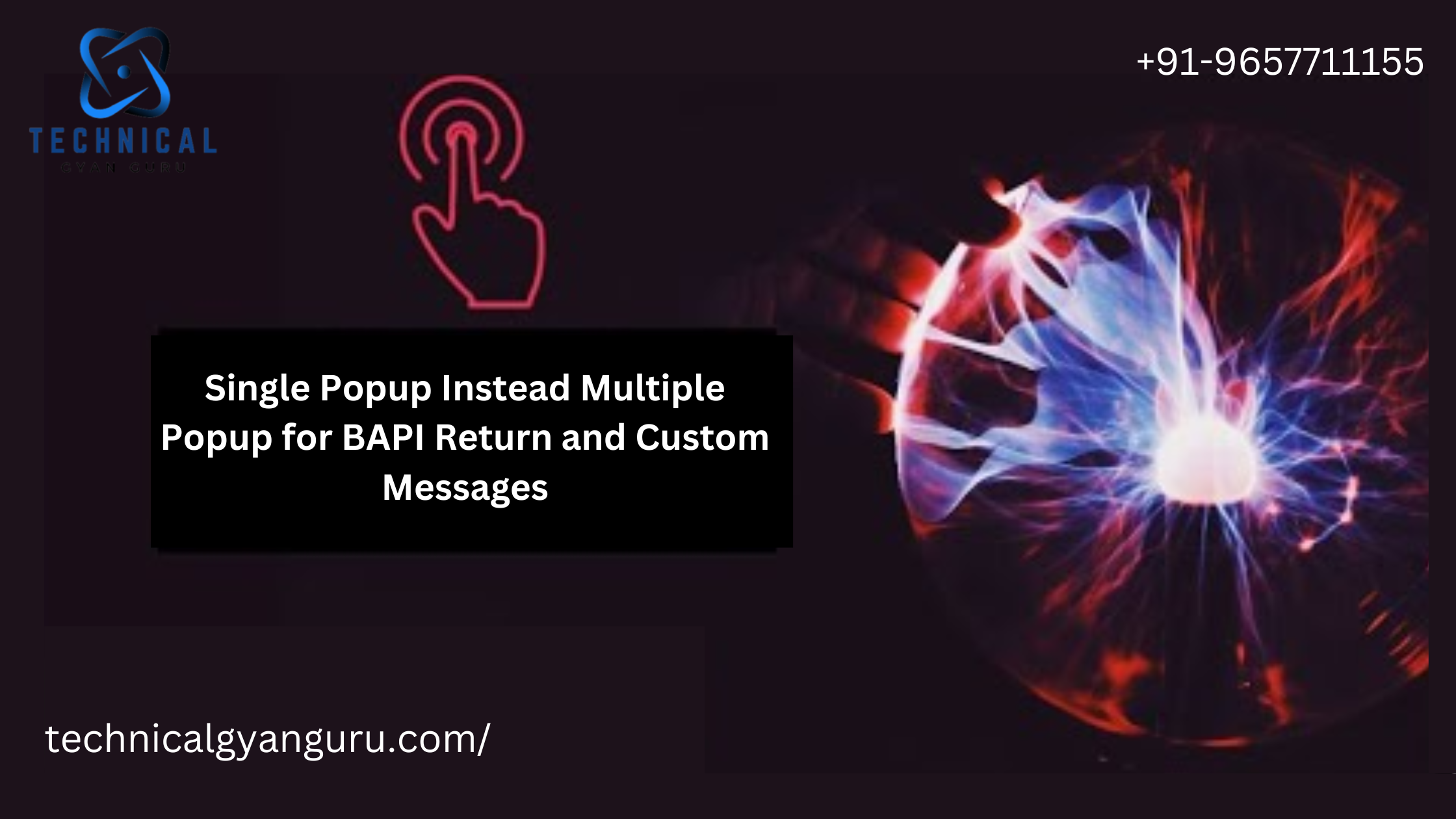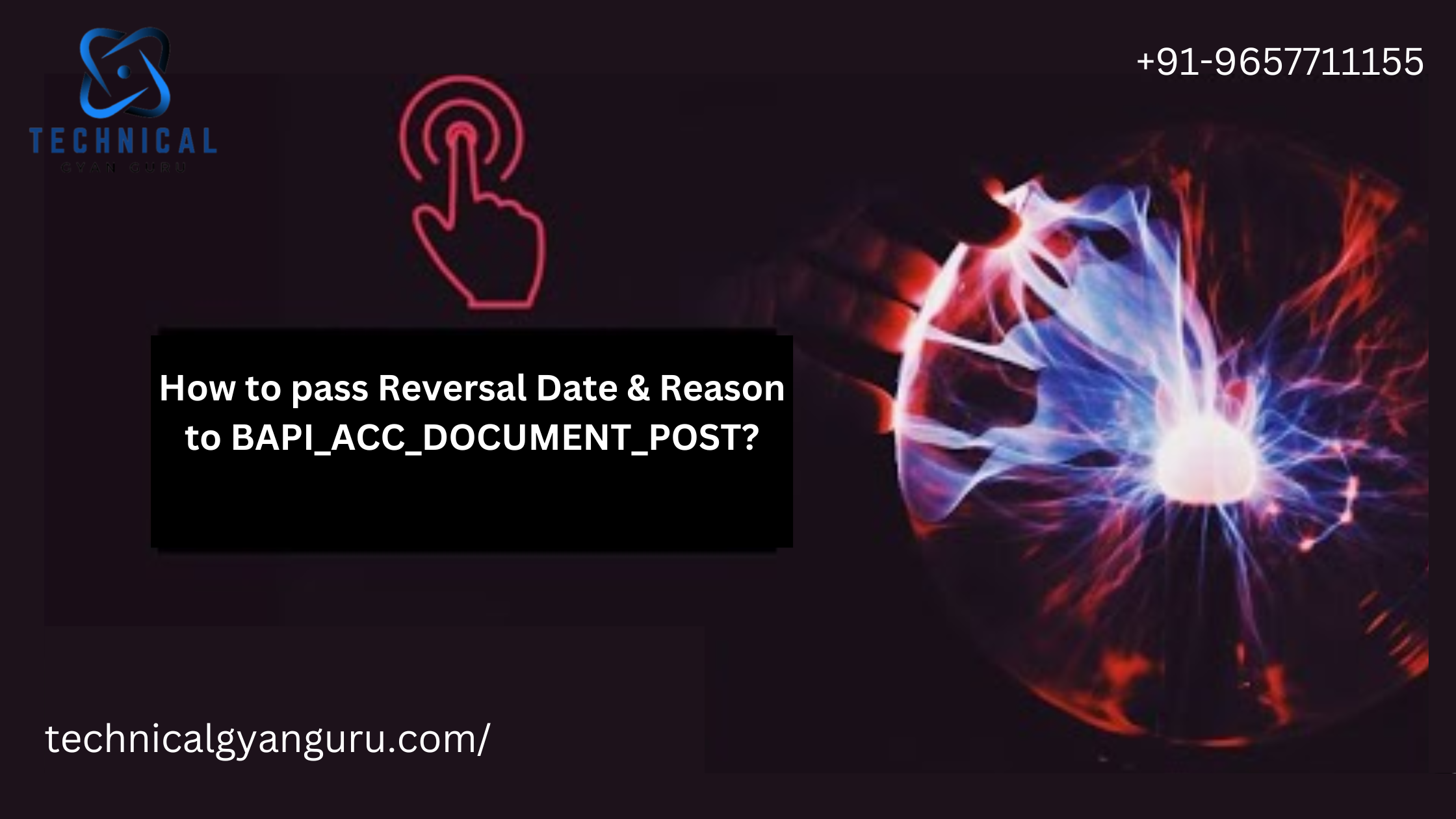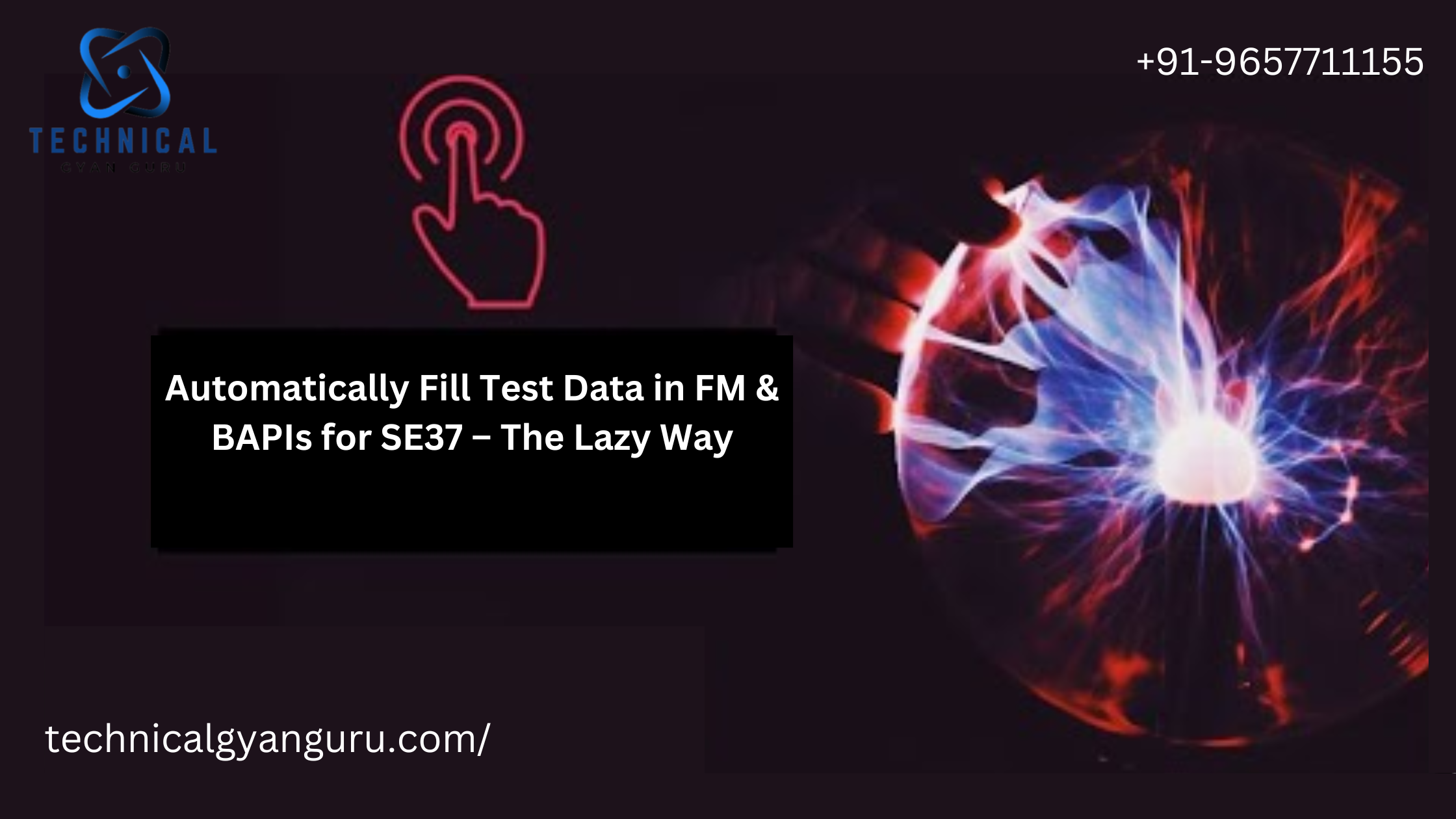
Definition : SAP Virtual Data Model
SAP Virtual Data Model : The VDM (virtual data model) forms the basis for data access in SAP S/4HANA in, for example, analytical applications and APIs. The VDM of SAP S/4HANA Cloud and SAP S/4HANA is represented by CDS views. The CDS views that make up the VDM follow consistent modeling and naming rules.
An Overview of the SAP S/4HANA VDM :
The virtual information model (VDM) addresses the semantic information model of the business applications in SAP S/4HANA. It targets uncovering all the business information such that facilitates its comprehension and utilization.
It is known as a virtual model since it abstracts information from the data set tables. Along these lines, existing tables can be changed into an adjusted uniform information model where vital.
Other than depicting the business semantics of the applications, the SAP S/4HANA VDM is likewise an executable model that gives admittance to the comparing information at runtime. The VDM is carried out utilizing explicitly ordered Center Information Administrations (Discs) substances, which conform to the VDM rules. Among others, these VDM rules incorporate major naming endlessly manages for organizing the VDM substances.
From one viewpoint, the guidelines cultivate the consistency of the models; then again, they permit proficient improvement of uses and APIs that cover insightful utilization, value-based handling, and search-related utilization situations. As well as giving the information model to applications, VDM sees are additionally utilized for different undertakings, for example, Compact discs based extraction.
The VDM isn’t expected exclusively to be utilized for creating applications at SAP. All things being equal, delivered SAP VDM models and delivered SAP administrations based on them offer a steady connection point with a distinct lifecycle. As a SAP client or accomplice, you can utilize them to construct your own applications and for improving SAP applications.
Center Information Administrations
Center Information Administrations (Discs) support the meaning of semantically rich information models. These models are overseen by the Information Word reference of the ABAP stage and can be executed in the data set framework.
Cds sees address the main Cds substance type. They catch select explanations in a grammar that is firmly connected with that of organized question language (SQL). Cds perspectives can be utilized, for instance, as the information source in ABAP select proclamations. The consequences of questioning a Cds view can be confined by connecting access control models to the Cds view. This implies that the inquiry just returns the information that the ongoing client is approved to peruse. These entrance control models are characterized utilizing the Cds information control language (DCL). Compact discs sees support the meaning of valuable metadata through explanations.
Besides, Compact discs sees permit displaying affiliations, which address guided relations to different Albums substances. Both the explanations and the affiliations are deciphered by the different purchasers of the Albums models. In unambiguous, the ABAP foundation involves the comparing data for determining extra usefulness and administrations from the Albums models. For instance, a Cds view commented on in like manner can be executed by the logical motor. The logical motor gives progressed highlights, for example, exclusion totals and order dealing with, which are not displayed by the plain select articulation of the Compact discs view itself.
Naming Shows
The VDM depends on a bunch of normal naming guidelines. Applying the accompanying standards guarantees steady and plain as day naming:
A name is exact and interestingly recognizes a subject. Conventional names are kept away from. For instance, the identifier of the deals request record is named SalesOrder, not simply ID or Request.
A name catches the business semantics of a subject.
Names being interesting infers that various subjects should have various names. This is explicitly significant for identifiers and codes. Involving similar name for two fields suggests that their hidden worth records match.
Names are created from English terms in camel case documentation with a capitalized first letter. Highlights are utilized in predefined cases as it were. Contractions are kept away from.
The naming principles are applied to all Discs elements and their parts — for instance, names of fields, affiliations, boundaries, or Cds sees.
The figure underneath shows an illustration of a SAP Fiori application that utilizes an OData administration, which thus depends on a VDM view stack. As may be obvious, the principal VDM view (at the base) maps the specialized field name MATNR from the data set table onto the semantic name Item, which is then utilized on a few layers up to the client confronting SAP Fiori UI.

Design of the Virtual Information Model
Inside the VDM, Compact discs elements fill unmistakable needs. They are arranged appropriately through VDM explanations. Note that a Discs element turns into a VDM substance on the off chance that it utilizes VDM comments and in the event that it complies with the VDM rules.
VDM sees are coordinated in a various leveled structure following a layered methodology. The upper layers select from and characterize relationship to the equivalent or lower layers, however not the other way around. The VDM sees are relegated to layers with an extraordinary Compact discs explanation (@VDM.viewType).
The following figure portrays the allowable conditions between the perspectives as information sources and the various sorts of perspectives. Alongside the conditions, the regular prefixes of the names of the Cds sees are apparent here as well. Utilization sees have name prefix C_ and far off Programming interface sees have the prefix A_. Essential perspectives and composite perspectives structure a connection point layer that can be utilized for building applications. The perspectives on this connection point layer have name prefix I_. As we will make sense of in the accompanying areas, fundamental perspectives and composite perspectives can likewise be confined reuse sees, demonstrated by name prefix R_. These perspectives are planned to just be reused locally inside their own applications.

Fundamental Perspectives
The most minimal level of the VDM view stack is characterized by fundamental perspectives. Essential perspectives are the main constituents of the VDM. They lay out what you might call the substance relationship model of the applications, from which they get data about information designs, conditions, and metadata. The fundamental reason for the essential perspectives is to act as reusable structure blocks for some other nonbasic VDM sees. Since the essential perspectives uncover all information, there is no requirement for some other nonbasic view to straightforwardly choose from the data set tables. Truth be told, getting to data set tables from nonbasic VDM sees is illegal in the VDM. Along these lines, fundamental perspectives give a total reflection from the information base tables to higher layers.
Composite Perspectives
Composite perspectives include extra usefulness on top of the essential perspectives. Like the fundamental perspectives, they are essentially expected to act as reusable structure blocks for different perspectives. Notwithstanding, they can currently be characterized so that they support a particular utilization space. For instance, they can characterize logical 3D shape sees, which solidify information hotspots for use in numerous scientific questions.
Conditional Perspectives
Conditional perspectives are an extraordinary kind of composite perspectives. Conditional perspectives characterize the information model of a business item and go about as an anchor for characterizing its value-based handling related viewpoints. Conditional perspectives might contain components that help the value-based handling rationale like extra fields that help protecting client input for a brief time. In this way, conditional perspectives are just utilized with regards to value-based handling — for instance, when consumed by other conditional perspectives or by utilization sees, which delegate their value-based handling rationale to the conditional perspectives.
Utilization Perspectives
Standard fundamental perspectives support any utilization case. This implies they are characterized free of a particular use case. Conversely, utilization sees are intentionally customized for a provided motivation. Utilization sees are supposed to be straightforwardly utilized in a particular utilization situation. For instance, a utilization view can give the very information and metadata (through explanations) that is required for a particular UI component.
Confined Reuse Perspectives
Of course, essential and composite perspectives characterize a connection point layer (named with the I_ prefix), which any SAP application might utilize. Once delivered, they can likewise be utilized by SAP clients and accomplices. Notwithstanding, improvement groups in some cases characterize fundamental and composite perspectives that are just for nearby use in their own applications. Such perspectives are not intended to be reused by designers from other application regions. In such a case, a confined reuse view (named with the R_ prefix) is characterized. Instances of confined reuse sees are value-based handling empowered sees, which uncover all capabilities and tasks of a business object, including the inner ones.
Venture Search Perspectives
Venture search utilizes extraordinary Albums sees as search models.
Distant Programming interface Perspectives
Far off Programming interface sees project the usefulness of a solitary business object for outer utilization. They decouple the customary, framework inner VDM model, which can develop after some time, from its outer shoppers, laying out a steady connection point. In light of the far off Programming interface sees, OData administrations are characterized, which can be consumed by distant applications. The comparing OData administrations are distributed on the SAP Programming interface Business Center point (https://api.sap.com).
Utilization Situations
The most noticeable utilization situations upheld by Albums substances are as per the following:
Investigation
Venture search
SAP Fiori UI applications
APIs for in-stack designer extensibility
Distant APIs
The accompanying figure shows a common VDM view stack for logical and value-based handling empowered applications. Use case-explicit perspectives are characterized on top of essential and composite reuse perspectives to adjust the information model and usefulness to the singular application needs.

Analytical Applications
Analytical applications are based on cube views and a network of associated dimension views, which themselves can associate text and hierarchy views. The actual analytical application is defined by an analytical query view, which projects the envisioned functionality from its underlying cube view. Note that unlike other CDS views, the analytical query views themselves are not executed on the database. Instead, the analytic engine interprets their logic and directly executes selections from the cube and dimension views.
Transactional Processing-Enabled Applications
The data model is captured by transactional views, which are related through compositional associations to form an entire business object. Therein the actual data selection logic is defined by the CDS view models. The behavior model specifying the supported Create, Read, Update, Delete (CRUD) operations is defined in an attached behavior definition model and implemented in ABAP classes. The consumption view projects relevant functionality and augments the data model with annotations that provide the metadata for rendering the UI application built on the view. Associated interface views can be used to enrich the data model where appropriate
Conclusion: Embracing the Future of Data Management with SAP VDM
Summing up the journey through SAP VDM, this section emphasizes its transformative impact on data management and encourages businesses to embrace the future of seamless data integration.
FAQs: Unveiling the Clarifications
Q1: Is SAP VDM suitable for small businesses? A: Absolutely! SAP VDM is scalable and adaptable, making it suitable for businesses of all sizes.
Q2: How does SAP VDM ensure data security? A: SAP VDM incorporates robust security measures, including encryption and access controls, to safeguard your data.
Q3: Can SAP VDM integrate with non-SAP systems? A: Yes, SAP VDM is designed for seamless integration across a variety of platforms, including non-SAP systems.
Q4: What is the typical timeframe for implementing SAP VDM? A: The implementation timeframe varies based on the complexity of your data landscape but is generally efficient, ensuring quick integration.
Q5: Are there ongoing maintenance requirements for SAP VDM? A: Regular updates and maintenance are recommended to ensure optimal performance and security of your SAP VDM implementation.







